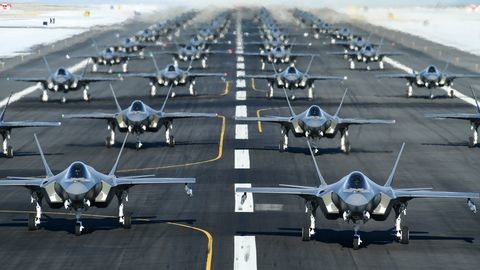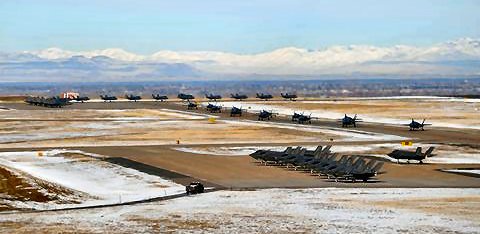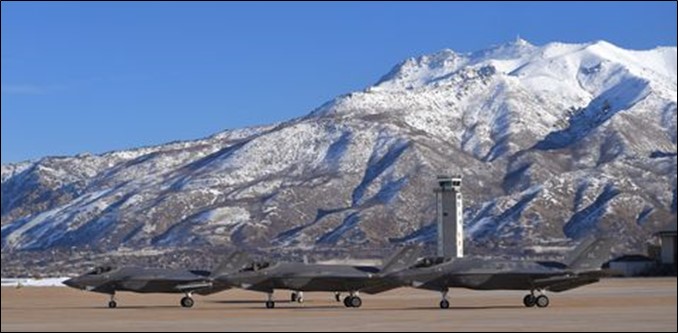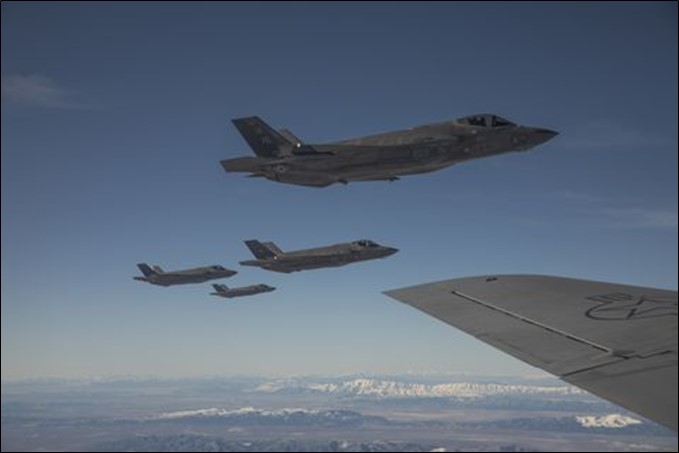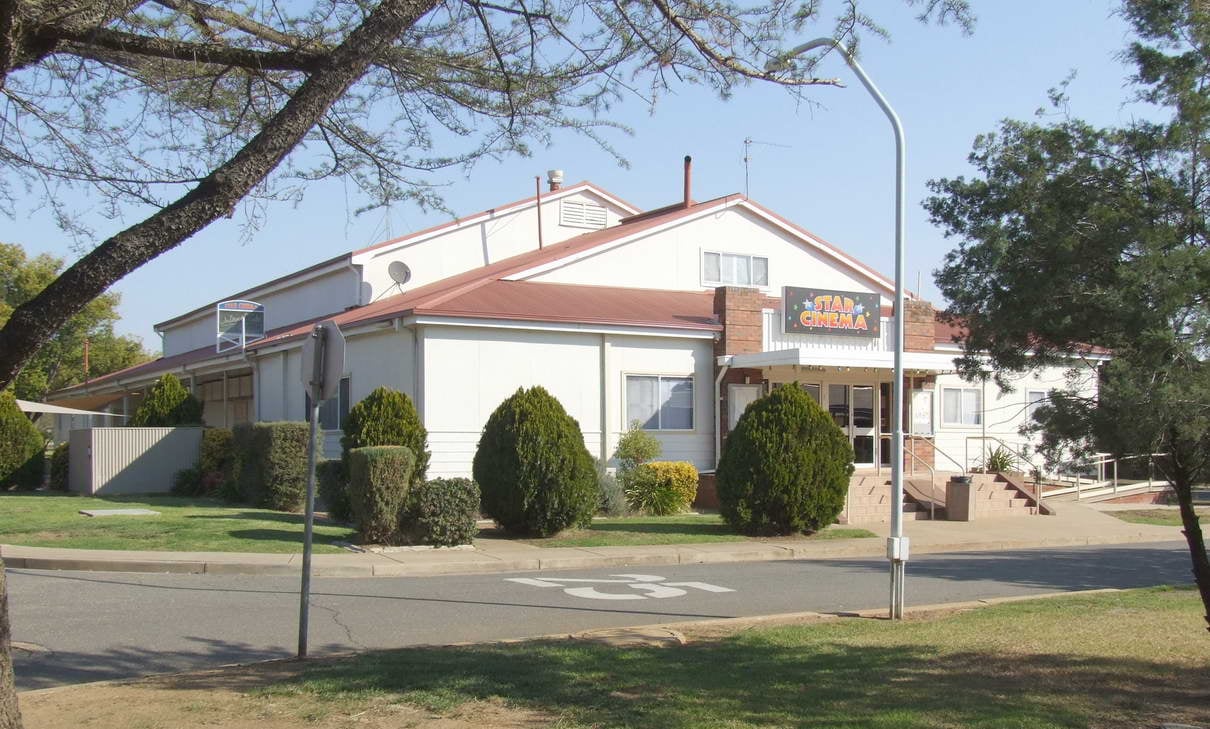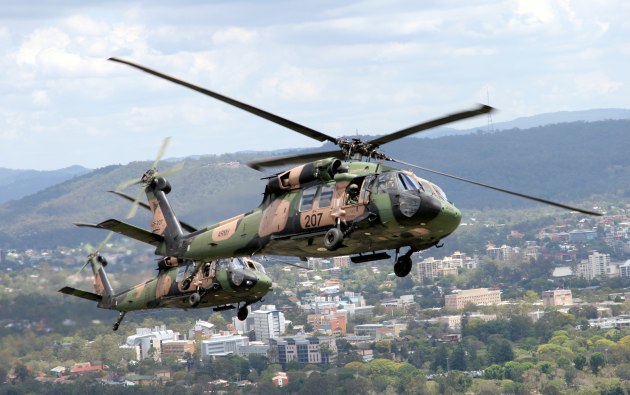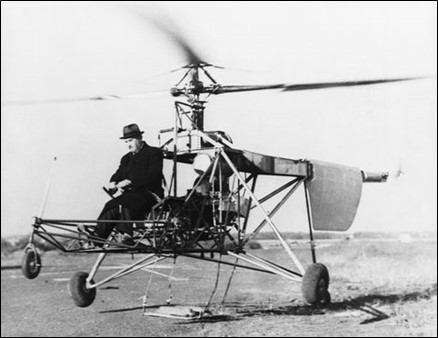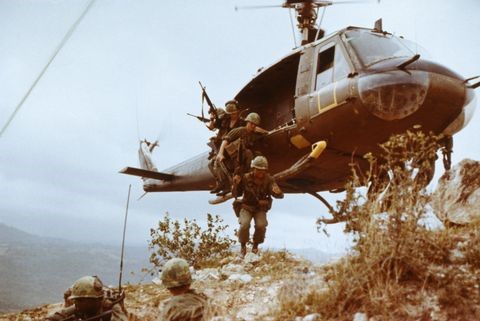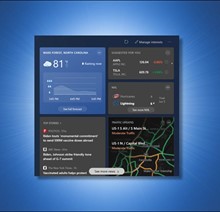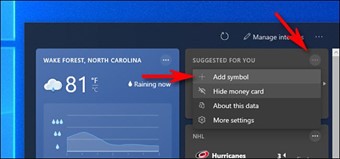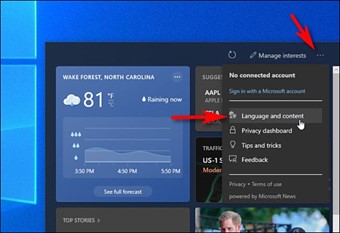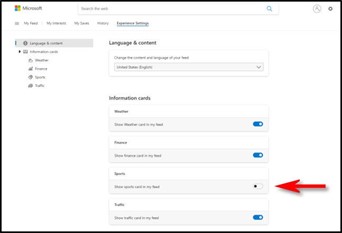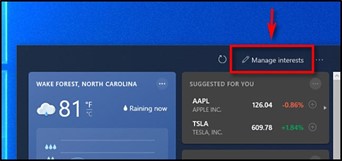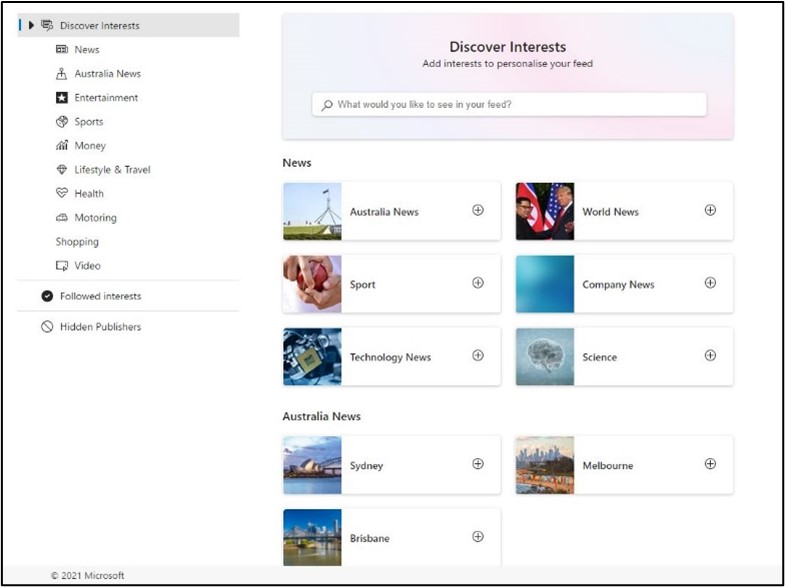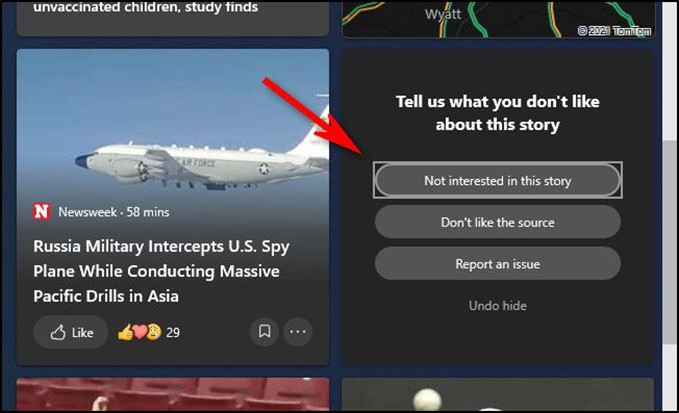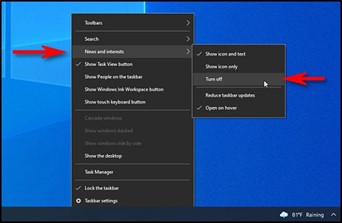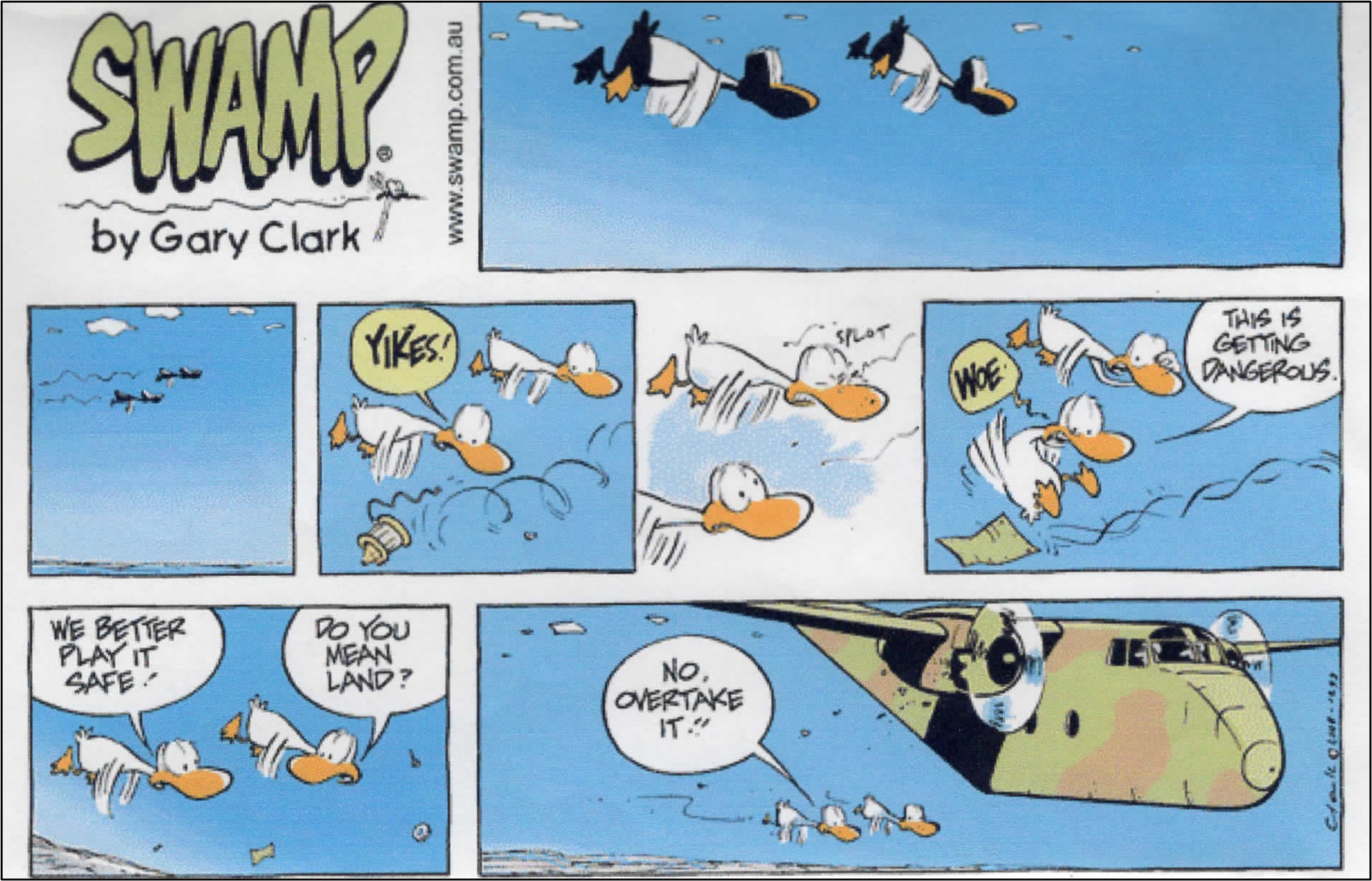|
|
||
|
||
|
Privacy Policy | Editorial Policy | Profit Policy | Join the Association | List of Members | Contact us | Index | Links |
||
|
Back Go to page: 1 2 3 4 5 6 7 8 9 10 11 12 13 14 15 16 17 18 19 20 Forward |
||
|
Out in the shed with Ted. |
||
|
|
||
|
|
||
|
Welcome to Kedron-Wavell Services Club. Located in the vibrant Chermside precinct, only 15 minutes north of Brisbane’s CBD, the Club is Brisbane’s award winning, premier function, entertainment and leisure destination.
With a cosmopolitan atmosphere and elegant features, Kedron-Wavell Services Club is the perfect place to meet your family and friends… or meet new friends! We’re easy to find and offer free off-street parking for members and guests.
Click the pic above to go to the Club's web site
|
||
|
|
||
|
Contents.
Configure Window 10's Weather and News Widget. There is a difference between a man and a woman, it's official.
|
||
|
The Defence Department attempts to explain the differences between men and women.
We think the ADF is really onto something here, seems to us there is one helluva lot of confusion out there these days, whenever young people go into a pub and start chatting someone up it’s very difficult for them to know whether it’s an Arthur or a Martha. Back in our day it was easy, boys had short hair, girls had long hair – simple.
The ABC got hold of some important advisory material being handed out by the ADF – we now know, and it’s official, a woman is not a scaled down man!!
Who would have known? (Though I think most blokes had worked that one out by the time they had turned 13)
|
||
|
|
||
|
Defence used the image above to distinguish the differences between men and women. (We suggest they take a walk along the beach at Surfers during summer – the differences are pretty obvious there). Their image lists hygiene, skull thickness and body temperature as among the differences. We’re sure they’re missing a few things–we can remember quite a few more, some nice ones too.
Some of their key points are:
The ABC has learnt the Australian Defence Force (ADF) is reviewing the range of equipment supplied to women in uniform, seeking feedback from female personnel and providing regular updates to the top brass. Last month a "Women in Combat" presentation was given to military leaders on the "development of combat equipment, including helmets, boots, body armour and field equipment that are more suitable for female ADF personnel".
A Defence spokesperson said the address also included feedback received from female ADF members, which is being used to inform potential improvements to the equipment supplied to them. Bringing women into the military, and keeping them there, remains a big challenge for the ADF, although recent figures show the situation is improving. According to Defence's most recent annual report, the participation rate of women in the permanent ADF reached 18.6 per cent, up from 17.9 per cent on the previous year.
The Department said its key focus for improving gender balance was "to ensure we are building Defence's capability and our operational effectiveness".
|
||
|
English Stiff Upper Lip: On a train from London to Manchester, an Australian was berating the Englishman sitting across from him in the compartment. "You English are too stuffy. You set yourselves apart too much. You think your stiff upper lip makes you above the rest of us. Look at me... I'm ME! I have Italian blood, Greek blood, a little Irish blood, and some Aborigine blood. What do you say about that?” The Englishman replied, "Awfully sporting of your mother, old chap!" |
||
|
|
||
|
|
||
|
|
||
|
Jack Robinson.
Some years back we Australians had lots of sayings, things like, “happy as Larry”, “cat got your tongue”, “he’s got a screw loose”, “send her down Hewie”, “cut the mustard” or “faster than you can say Jack Robinson”. You don’t hear them a lot these days, they seem to have disappeared like Holdens and Falcons, but you wonder where they came from, what was their origin?
We did some research and found there is actually a sound reason for a lot of them. Here’s the meaning and background for a few:
Happy as Larry: Extremely happy. The origin of this phrase is unknown, but is perhaps an arbitrary partial rhyming reduplication with 'happy'. The phrase was first recorded in Australia in the 1880s.
Send her down Hewie: Make it rain. The phrase was first recorded in 1912. Since the 1950s surfers have also implored Hewie for good waves. Theories about the origin of the word Hughie range from alterations of the names Jupiter, Zeus, or Yahweh, to the classical Greek huei ‘it is raining’. Hard Word: Urgent request. An importunate request (especially of a monetary or sexual nature). This term is often found in the phrase to “put the hard word on”: to make demands on someone. The term is from British dialect where it had various meanings including 'abuse, scandal, marriage proposal, refusal'. The Australian usage is recorded from the early 20th century.
Before you can say Jack Robinson. Very quick. It would
be pleasing to be able to point to a historical figure called Robinson
who was the source of this expression. Regrettably, we can't. It could
well be that there was an actual Jack Robinson who was reputed to be
quick in some way, but, if that's the case, any reliable record of him
has disappeared. It is just as likely that Jack Robinson was a mythical
figure and no more real th
Cut the mustard. To cut the mustard is “to reach or surpass the desired standard or performance” or more generally “to succeed, to have the ability to do something.” Most often, the phrase is used in negative constructions for when something doesn’t live up to expectations or can’t do the job. The word mustard itself goes back, via French, to the Latin mustum (English must), which was an altogether different substance. It was the juice squeezed from grapes before it was made into wine. Mustard is so named because the condiment was originally made by making mustards seeds into a paste with must. It’s not clear exactly why we say cut the mustard. Some have proposed literal derivations, such as cutting down (harvesting) mustard plants. Others have suggested connections to the phrase pass muster, when a solider gets approval after troops are assembled together for inspection.
|
||
|
Teacher says, "OK class, I'd like you all to tell me what you need at home. Susie says, "We need a computer". Wendy says. "We need a car". Johnny says, "We don't need anything, Miss". Teacher says, "Come on, Johnny, everyone needs something?" "No, Miss, my sister came home with her new boyfriend who had tattoos and lots of rings and my Dad said 'That's all we bloody need!"
|
||
|
Watch the largest F-35 Elephant Walk in history.
52 F-35As put on a show at Hill Air Force Base in Utah in the US
|
||
|
|
||
|
The exercise, known as an “elephant walk,” involved a mass take-off of 52 F-35As. The jets involved in the exercise are the only combat-capable F-35As in the service’s entire inventory. The exercise suggests that the planes are growing easier to maintain, but they’re also really, really expensive to fly.
Although the cost to buy has come down, the cost to fly remains high. The F-35 costs US$44,000 an hour to fly, or $44 million to fly for 1,000 hours, or $352 million over the 8,000 hour lifespan of the aircraft. That’s more than twice as much as the F/A-18 Super Hornet. Lockheed Martin wants to get the cost per hour to US$25,000 by 2025, but the Pentagon believes that number may be unattainable. The Air Force has warned in the past that if the cost per flight hour doesn’t go down, it could end up buying fewer F-35s.
|
||
|
|
||
|
In a dramatic show of air power, the U.S. Air Force’s Hill Air Force Base just sortied 52 F-35As. The aircraft massed on the runway and then took off, one after the other, into a clear Utah sky. The Air Force claims the timing of the exercise, as the U.S. enters a new crisis with Iran, is purely coincidental, and the exercise was planned months in advance.
The exercise took place at Hill Air Force Base in Utah. Hill was the first Air Force Base to become fully operational with the F-16 Fighting Falcon more than thirty years ago and history is repeating itself with the F-35A. Hill is home to the only four combat capable F-35A squadrons in the U.S. Air Force, split between the active duty 388th Fighter Wing and the reserve 419th Fighter Wing. After launch, 24 of the jets were refueled in midair by KC-135 Stratotankers.
Hill received the last of 78 F-35As in December 2019. To commemorate the occasion, the base decided to conduct what the U.S. military calls an “elephant walk”: a mass sortie of aircraft. The walk starts with a surge of fighters from their hangars, a photo op on the tarmac, and then all of the planes are launched into the air, one after the other. Currently, the wings fly 30-60 sorties per day from Hill’s flightline. During the exercise, Airmen launched roughly the same number of daily sorties, but they took off in quick intervals.
The base staged another elephant walk in November 2018, when it sortied just 35 jets at once.
|
||
|
|
||
|
Elephant walks are a show of force, demonstrating the might and power of the U.S. Air Force. They’re also expensive. If each aircraft involved in the exercise flew for approximately two hours, that’s a combined operating cost of $4.5 million. For the cost of seventeen exercises, the Air Force could buy a brand new F-35A.
The service and manufacturer Lockheed Martin are struggling to get the cost per hour down, which left unchecked could force the Pentagon to buy fewer planes. That having been said, the Air Force does get something out of the exercise. The entire base trains for the event, giving pilots and ground crew a fixed date to get a large number of jets ready to take to the skies. Once the planes are ready, the base must work to launch and recover 52 aircraft. It’s not a war scenario, but it is one that exercises virtually the entire base’s muscles. In an announcement, Hill AFB stated “launching aircraft from multiple squadrons simultaneously presents various challenges and allows the wings to evaluate the capabilities of maintenance professionals, as well as pilots and command and control teams.”
|
||
|
|
||
|
The elephant walk is also evidence the F-35 is growing easier to maintain. In 2018, as Air Force Magazine points out, the F-35 had a reliability rate of 66 percent. By late last year, the reliability rate had risen to 75 percent. According to the base, the 34th Fighter Squadron is currently flying in the Middle East, that means a very high number, likely higher than 75 percent, of remaining F-35As were able to take part in the exercise—an encouraging sign for a fighter plane that’s seen more than a decade of controversy.
You can watch the video below.
|
||
|
|
||
|
|
||
|
Latest purchase limits placed on shops, in light of the Corona virus due to panic buying:
Coles: 2 hand sanitisers and a 4 pack of toilet rolls. IGA: 1 hand sanitiser, 500 grams of rice and a 4 pack of toilet rolls. Woolworths: 1 lobster, 6 quail’s eggs and 100gram Foie Gras. ALDI: 1 MIG welder, 1 pink sports bra, 2 trumpets and 1 wetsuit.
|
||
|
Now THIS is a proper Covid mask
And! If you’re confused about this Covid business, be confused no more. See HERE.
|
||
|
Kedron Wavell Services Club.
Located in the vibrant Chermside precinct, only 15 minutes north of Brisbane’s CBD, the Club is Brisbane’s award winning, premier function, entertainment and leisure destination.
With a cosmopolitan atmosphere and elegant features, Kedron-Wavell is the perfect place to meet your family and friends… or meet new friends! We’re easy to find and offer free off-street parking for members and guests.
Our Club is a non-profit organisation. Every dollar spent in the Club goes back into the community. Kedron-Wavell has contributed more than $12 million dollars in the last ten years to community-based services and projects, such as the nearby public swimming pool, Chermside Library, the Prince Charles Hospital and various affiliated sporting groups and clubs.
The Club supports various charity organisations, community welfare and provides training and jobs. Currently, the Club employs close to 200 local people. The Club is living up to its reputation as Brisbane’s premier entertainment destination for fun.
The Club boasts the new Bravo Brewhouse where you can enjoy a number of in-house brewed beers as well as enjoy a fabulous Asian meal.
|
||
|
|
||
|
|
||
|
|
||
|
|
||
|
|
||
|
|
||
|
Wagga Cinema.
As it was
As it is now!
|
||
|
|
||
|
|
||
|
The Black Hawk Nigel Pittaway Defence released a Request for Solutions (RFS) on the 25th March, 2021, advising the possible sale of up to 27 ex-Army Sikorsky S-70A-9 Black Hawk helicopters and associated spares and equipment, as the type is retired from service in coming months.
Aircraft are expected to come up for disposal between July 2021 and December 2022, when the final Black Hawk is expected to be retired. The helicopter has been replaced as Army’s primary battlefield helicopter by the NHI (Airbus) MRH 90 Taipan multi-role helicopter (MRH). The Commonwealth’s preference is to sell the helicopters and associated inventory to either one purchaser, or as few purchasers as practicable.
|
||
|
|
||
|
However, the document makes it clear that Defence does not guarantee that any assets will be offered for sale within a certain timeframe, or indeed if at all. Furthermore, it says that the number of assets may vary due to Commonwealth requirements and/or its commitments to other recipients, such as museums.
Similar to the US Army’s UH-60A Black Hawk variant, Australia acquired 39 S-70A-9 helicopters from 1988 to be assembled at Bankstown by Hawker De Havilland. The type was commissioned into service with 9 Sqn RAAF in September 1988, but the battlefield helicopter capability was transferred to Army control in 1989. To date, five Black Hawks have been lost in accidents.
Twenty-nine helicopters are listed in the RFS (albeit with a maximum of 27 to eventually be sold), comprising 19 ‘Configuration 1’ aircraft and 10 ‘Configuration 2’ helicopters which are fitted for, but not with, an Electronic Warfare Self Protection (EWSP) suite delivered under Project Echidna (Air 5416).
The RFS advises that four of the 29 helicopters listed (three ‘Configuration 1’ and one ‘Configuration 2’) are “more likely to be removed from the sale”. All helicopters will be made available with their associated CAMM2 maintenance data. The spares inventory, as of March 5, included 889,623 non-rotable, and 12,390 rotable items with total book values of $47 million and $71 million respectively. Previously Defence that 34 aircraft (i.e. all surviving airframes) would be disposed of, including helicopters earmarked for the Australian War Memorial in Canberra, the Museum of Army Flying at Oakey, the RAAF Museum at Point Cook and the RAAF Aviation Heritage Centre at Amberley.
To further confuse matters, the Commonwealth Government announced in June 2018 that two Black Hawks will be donated to the NSW Rural Fire Service.
The UH-60 Black Hawk wasn’t built to land amid a raging wildfire, but it was built for survival. It was born out of the US Army’s need for a helicopter that could rush troops into and out of battle quickly and safely. In the four-plus decades since it first entered service, this multi-role helicopter has proven that it’s good for much more than that.
In 1938, Igor Sikorsky envisioned a different way to fly. His single-engine aircraft, called the VS-300, had no wings, instead, it had three long blades which extended from a centre point above the fuselage. As these blades were spun by a 75-horsepower rotary engine, Sikorsky’s aircraft would lift straight up into the sky, with no need for long runways—or any runway at all.
Though Sikorsky’s VS-300 debuted in 1939, it wasn’t until the atom bomb tests of the mid-1940s, when many U.S. commanders first got to witness the A-bombs’ destructive might, that a practical use for his invention began to take shape. After witnessing one such nuclear test, Marine Lieutenant General Roy Geiger promptly wrote a letter to the Commandant of the Marine Corps, General Alexander Vandergrift, explaining that the Corps’ approach to amphibious landings was outdated in the new atomic age.
Large-scale amphibious landings, like the Normandy Invasion just two years earlier, were already incredibly dangerous. But a single atomic weapon could have wiped out the entire invasion force, if the Nazis had had such a weapon in their arsenal. Helicopters, Geiger reasoned, could quickly move troops from ships to landing sites, doing away with slow-moving amphibious troop carriers, and with them the risk of atomic annihilation.
Within a decade, the US Army started receiving deliveries of Bell’s UH-1 Iroquois (nicknamed Huey) to serve as aerial ambulances. Once the U.S. entered the Vietnam War, the Huey soon tackled more missions, ranging from common transport to air assaults. More choppers were pressed into service: The US Army’s total helicopter count grew from 2,500 in 1960 to more than 9,500 by 1969.
While the UH-1 was a major success, it was too vulnerable, especially when landing in combat zones. Of the more than 7,000 UH-1s flown in Vietnam, some 3,300 were shot down or destroyed, killing 2,100 pilots and crew members. By the war’s end, the Pentagon was sure about two things:
So the Army looked for a helo that could fight back, a chopper that was purpose-built for an air assault role. It had to be fast, powerful, and resilient. A huge emphasis was placed on the survivability of these new helicopters, not only for the sake of the pilots and crew, but also for budget reasons.
Despite stiff competition from Boeing and an improved UH-1 from Bell, the contract to build America’s next workhorse chopper went to Sikorsky Aircraft, the company founded by the SV-300’s inventor. It was called the UH-60 Black Hawk.
|
||
|
|
||
|
|
||
|
How to configure Windows 10’s Weather and News taskbar Widget
In June 2021, Microsoft enabled a News and Weather widget (called “News and Interests”) on Windows 10’s taskbar. It shows weather, sports scores, news, and more at a glance. Here’s how to show, hide, and configure parts of the widget.
The News and Interests widget was enabled for all fully updated Windows 10 PCs in June 2021. It will automatically appear on your taskbar. If your PC has the widget available and enabled, you’ll see it on the taskbar in the lower-right corner of the screen near the date and time. By default, the widget will display the current temperature for your location and a very brief weather forecast in the taskbar itself. To open the widget fully, hover your mouse cursor over it (or click it).
If you don’t see the widget in your taskbar, you’ll need to update to the latest version of Windows. After you update it could take a few hours to appear. That’s normal.
If you’ve previously disabled the widget, you can get it back by right-clicking your taskbar, pointing to “News and interests,” and selecting either “Show icon and text” or “Show icon.” If you don’t see the News and Interests option in your taskbar’s context menu, you’re likely running an older version of Windows 10 without this feature.
How to use and configure widget cards
The News and Interests widget starts out with different panels of information called “cards” that are enabled by default. These cards show sports scores, stock prices, weather forecasts, or local traffic. If you scroll down, you’ll also see news stories pulled automatically from the web.
If you want to see more information about weather, stocks, or the other cards, click the card itself. A page with more details will load on MSN.com in the Edge browser. (Even the widget’s weather card opens an MSN weather website instead of Windows 10’s built-in Weather app.) If you want to configure how a card works, such as changing the location in the weather card or adding a ticker symbol to the finance card, click the menu button in the upper-right corner of the card panel. In the menu that appears, you’ll see the options for configuring the card.
The widget refreshes itself throughout the day, but if you ever want to refresh the card’s information manually, you can click the “Refresh” button (It looks like an arrow in a circle shape.) at the top of the widget window.
How to Disable Sports, Finance, Weather, or Traffic Cards
If you don’t want to see a certain widget card in particular, open the News widget and click the menu button (three dots in a circle) in the upper-right corner of the panel that you’d like to hide.
In the menu that appears, select “Hide Sports Card” (or whichever card it is). At the moment there’s no way to disable the news feed portion of the widget.
You can also turn on and off different cards from a unified menu. To do so, click the three dots button in the upper-right corner of the widget window and select “Language and Content” from the menu.
The Edge browser will open and load an “Experience Settings” page on an MSN.com website that controls the preferences for the Windows 10 news widget. In the “Information Cards” section, flip the switches to “off” beside the cards that you want to hide. (You can also re-enable hidden cards from this menu.)
After you make changes, open the widget in the taskbar again and click the circular “Refresh” button at the top.
Upon reload, the widget will reflect the settings that you made in the browser: Cards that you’ve hidden will disappear, and others that you’ve reenabled will show up again.
Note: If you’re logged in to a Microsoft account in your browser while changing your News widget settings but not logged in to the same Microsoft account in Windows 10, the settings on the MSN.com page will not work. In that case, you’ll need to log out of your Microsoft account in your browser, reload the MSN widget settings page, and then make the changes again. Reload the widget to make the settings take effect. A bit messy but necessary!
How to customize your taskbar widget news feed
If you’d like to influence which news Microsoft pulls from the web to show on your News and Interests widget, open the widget (by clicking it in the taskbar) and select “Manage Interests” at the top of the widget window.
A special MSN.com web page will open in your browser that allows you to select or deselect interests by subject. Available interests include Australia News, Technology News, Science, TV and more.
After selecting your interests, open the widget and click the reload button (a circular arrow) at the top of the window. You’ll see more news related to the subjects that you selected.
If you don’t like certain news reports that you see in your news feed, you can hover over an individual news panel and click the “X” button in its upper-right corner.
The widget will then give you a choice between “Not interested in this story” (The widget will show fewer stories like this.), “Don’t like the source” (The widget will no longer show news from that publication.), or “Report an Issue” (where you can report offensive or misleading content).
|
||
|
|
||
|
Alternately, you can make similar changes by clicking the menu button (three dots in a circle) in the lower-right corner of the individual news card. There, you can “like” or “dislike” a story, ask the widget to hide news from this source, and more.
How to hide the news and weather widget completely
If you don’t want to see the news widget on your Windows 10 taskbar, right-click the taskbar and select “News and Interests,” and then “Turn Off” in the menu that appears.
In that same menu, you can also control options related to the widget, including selecting a smaller size for the widget in the taskbar (“Show Icon Only”) and making it so that you have to click the widget to open it (“Open on Hover”).
|
||
|
|
||
|
An Australian guy is travelling around the Greek Islands. He walks into a bar and, by chance, is served by an Australian barmaid. As she takes his order, a Foster's, she notices his accent. Over the course of the evening, they get chatting. At the end of her shift, he asks if she wants to come back to his place. Although she is attracted to him, she says no. He then offers to pay her $200 to sleep with him. As she is travelling around the world and is short of funds, she agrees. The next night the guy turns up again. Again, he orders Fosters and after showing her plenty of attention, asks if she will sleep with him again for $200. She remembers the pay out from night before and is only too happy to agree. This goes on for 5 nights. On the 6th night, the guy comes in again, orders Fosters but goes and sits in the corner. The barmaid thinks that if she pays him more attention then, maybe she can shake some more cash out of him. So she goes over and sits next to him. She asks him where he's from in Australia. 'Melbourne ', he tells her. 'So am I. What suburb?' she enquires. 'Glen Iris' he replies. 'That's amazing,' she says excitedly, 'so am I - what street?' 'Cameo Street ' he replies. 'This is unbelievable.........' she says, her voice quavering; 'What number?' 'Number 20', he replies. She is totally astonished. 'You are NOT going to believe this,' she screams, 'but I'm from number 22! My parents still live there!' 'I know...' he says, 'Your Dad gave me $1,000 to give to you'
|
||
|
Now THIS is a beer fridge
AND!! Dying on the toilet should be avoided at all costs. Luckily THERE is a way to avoid this.
|
||
|
|
||
|
|
||
|
|
||
|
|
||
|
|
||
|
Blessed are those who are cracked for they are the ones who let in the light.
Ok, ok - I'm going back to my room now!
I'm Ted Mac - and you're not!
|
||
|
|
||
|
Back Go to page: 1 2 3 4 5 6 7 8 9 10 11 12 13 14 15 16 17 18 19 20 Forward |
||
|
|

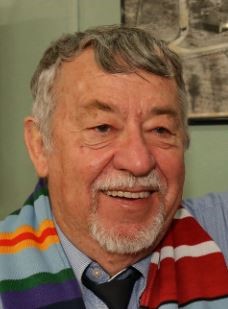

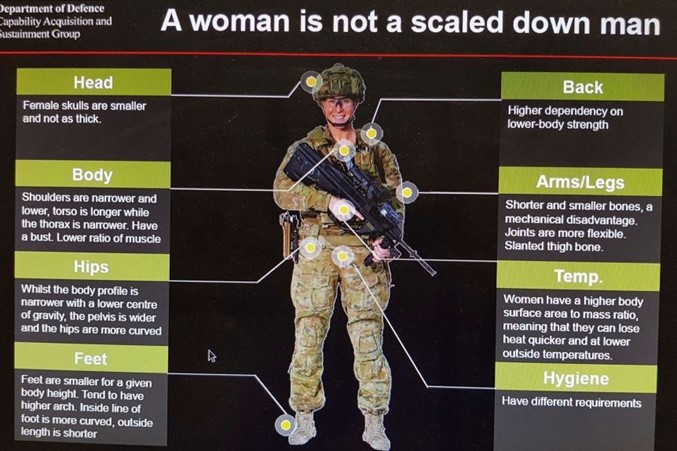

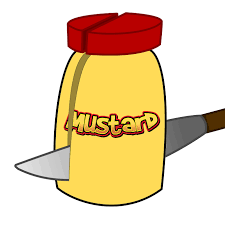 an
Jack Tar, Jack Frost or Jack the Giant Killer. A Sir John (Jack)
Robinson was the Constable of the Tower of London for several years from
1660 onward. Some have suggested that he was the source of the phrase
and have bequeathed him a reputation for hastily chopping off people's
heads. There's no evidence to link the phrase with Sir John, or that he
was in any way unusually quick in dispatching the Tower's inmates. That
suggested derivation also fails to account for the hundred year gap
between Sir John Robinson's career and the first appearance of the
phrase in print.
an
Jack Tar, Jack Frost or Jack the Giant Killer. A Sir John (Jack)
Robinson was the Constable of the Tower of London for several years from
1660 onward. Some have suggested that he was the source of the phrase
and have bequeathed him a reputation for hastily chopping off people's
heads. There's no evidence to link the phrase with Sir John, or that he
was in any way unusually quick in dispatching the Tower's inmates. That
suggested derivation also fails to account for the hundred year gap
between Sir John Robinson's career and the first appearance of the
phrase in print.